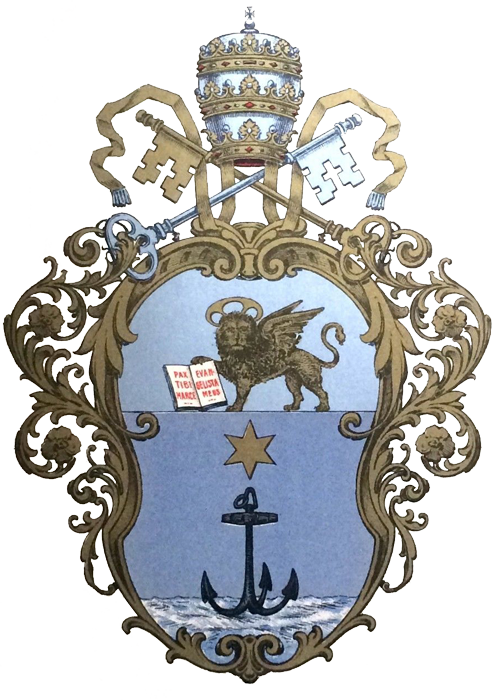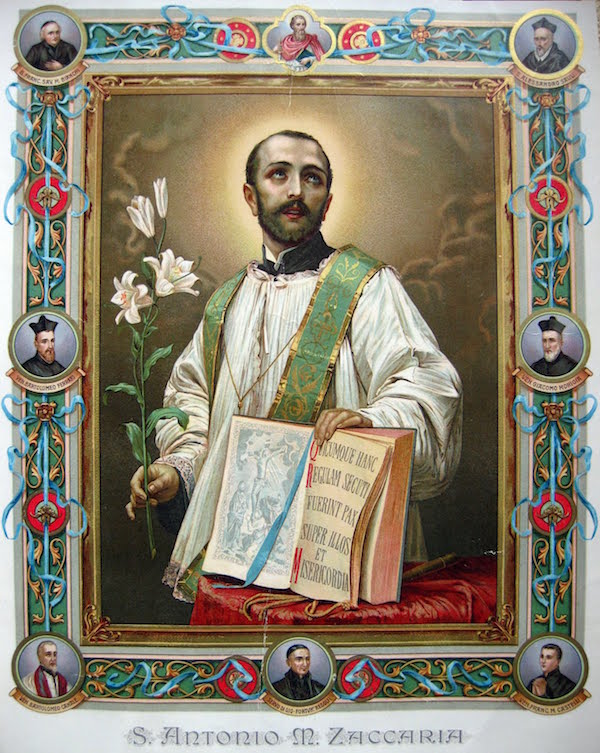5VII St Anthony Mary Zaccaria
Anthony was born in Cremona (Lombardy, Italy) in December 1502.
A few months after his birth, he lost his father (Lazzaro). He was left in the tender care of his mother, Antonina Pescaroli, who was widowed when he was only 18. After attending local schools, Anthony went to Padua, where he crowned his medical studies with a doctorate (1520-1524). He also studied philosophy there. He then returned to Cremona and, as a layman, undertook to catechise poor young people in the church of St Vitalis, which stood next to the palace of the Zaccaria family. At the same time, he worked intensively on his own sanctification. Under the direction of the Dominicans, he undertook theological studies. He took up biblical studies and studied the writings of the Doctors of the Church, especially St Thomas Aquinas.
In 1528 (or January 1529) he was ordained a priest. He continued to remain in close contact with the Dominicans. From this order he chose his new spiritual director, Battista Carioni da Crema (a friend of Savonarola). With him and Ludovica Torelli, whom he met, he went to Milan in 1531 and joined the oratory of ‘Eternal Wisdom’, which she had founded at the convent of the Augustinian nuns Archangela Panigarola. After her death, the confraternity began to decline. Under Antony’s direction, it gained new momentum. Moreover, it grew into three religious families, which he dedicated to Saint Paul: “the Sons of St Paul”, approved by Rome under the name “Clerics Regular of St Paul the Beheaded”; the female order “Angels of St Paul the Convert” and the lay order “Pious Husbands of St Paul”. Anthony’s greatest fame came with the men’s order, which was named the Barnabites after the church of St Barnabas, at which it was founded, and which was approved by Pope Clement VII in 1533 (The Clerics Regular of St. Paul.) The female order received approval from Pope Paul III in 1543. The sisters (The Angelic sisters of St. Paul) were called Barnabites. In addition, St Anthony Maria Zaccaria founded the 3rd Order of Barnabites, for lay people.
St. Anthony spent the following years in Milan, where he established the houses of his outposts. He was supported by the Bishop of Milan, St Charles Borromeo, with whom he wrote the rule for his congregation. To encourage the people of Milan to convert, he organised an act of public penance. The penitents were led by his spiritual sons and daughters. This had a positive effect on the people, who joined in large numbers in this practice of public penance before God for their massive departures from the faith.
To revive the religious spirit, Anthony introduced the practice of “15 Fridays.” — —
– At the sound of the bells at the hour when the Lord Jesus suffered death, the people gathered in the churches. There a service was held with a passion sermon. Anthony’s desire was that the faithful should be constantly reminded of the price they had been redeemed with and that they should shape their Christian life according to this. This is why the services were combined with confession. Anthony was also distinguished by his particular devotion to the Eucharist. Contrary to the accepted and entrenched custom of the time, he encouraged the faithful to frequent, even daily, Holy Communion.
St Anthony is also credited with introducing the 40-hour service of adoration of the Blessed Sacrament, displayed in a monstrance.
Exhausted by his apostolic work, he died in Cremona, in his mother’s house, on 5 July 1539, aged just 37.
His body was buried in Milan in the church of St Paul, belonging to the Barnabites.
In 1891, it was moved to the church of St. Barnaba.
To this day, many pilgrims gather at his tomb.
Anthony’s canonisation did not take place until 27 May 1897. It was carried out by Pope Leo XIII.



